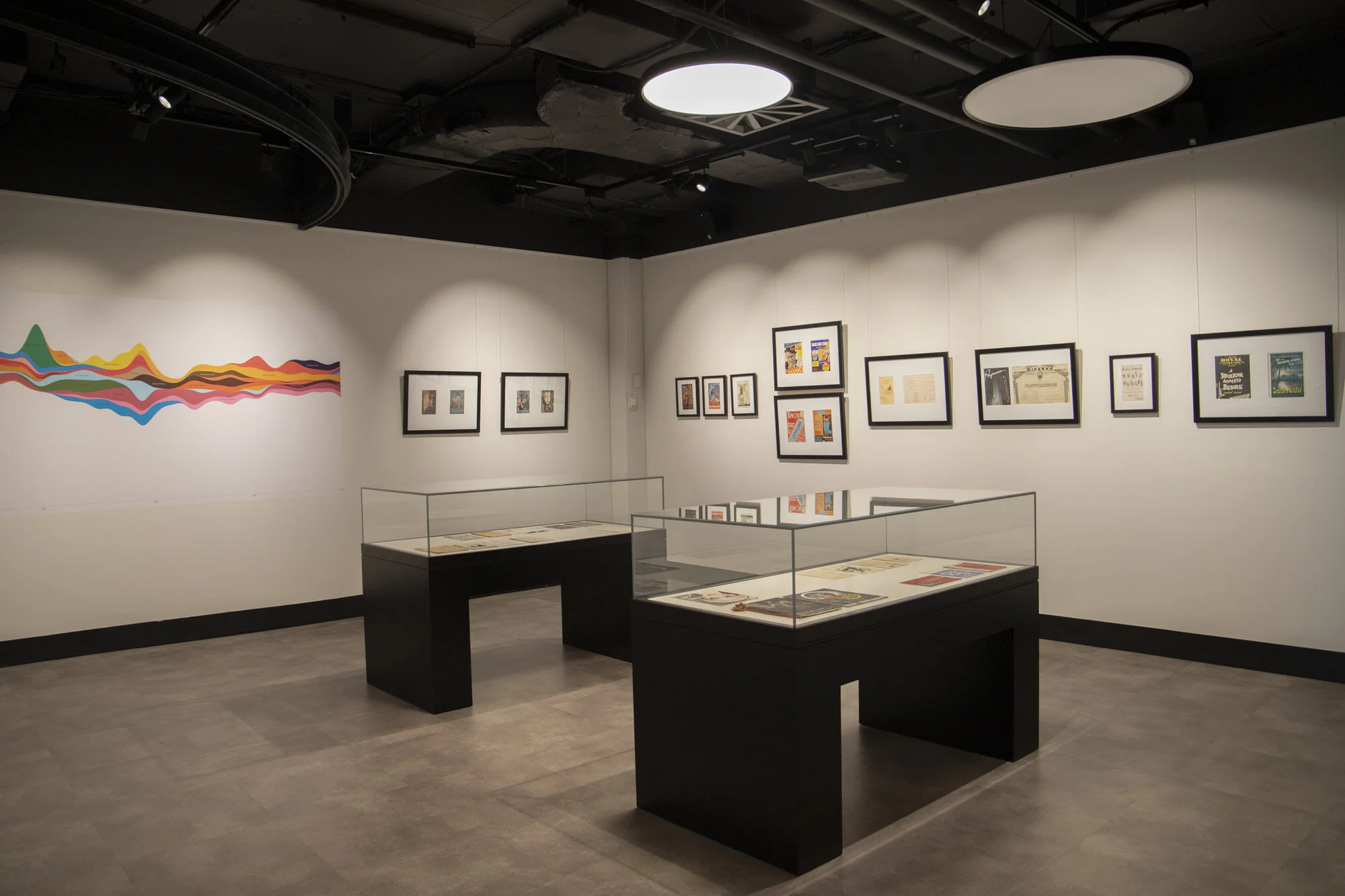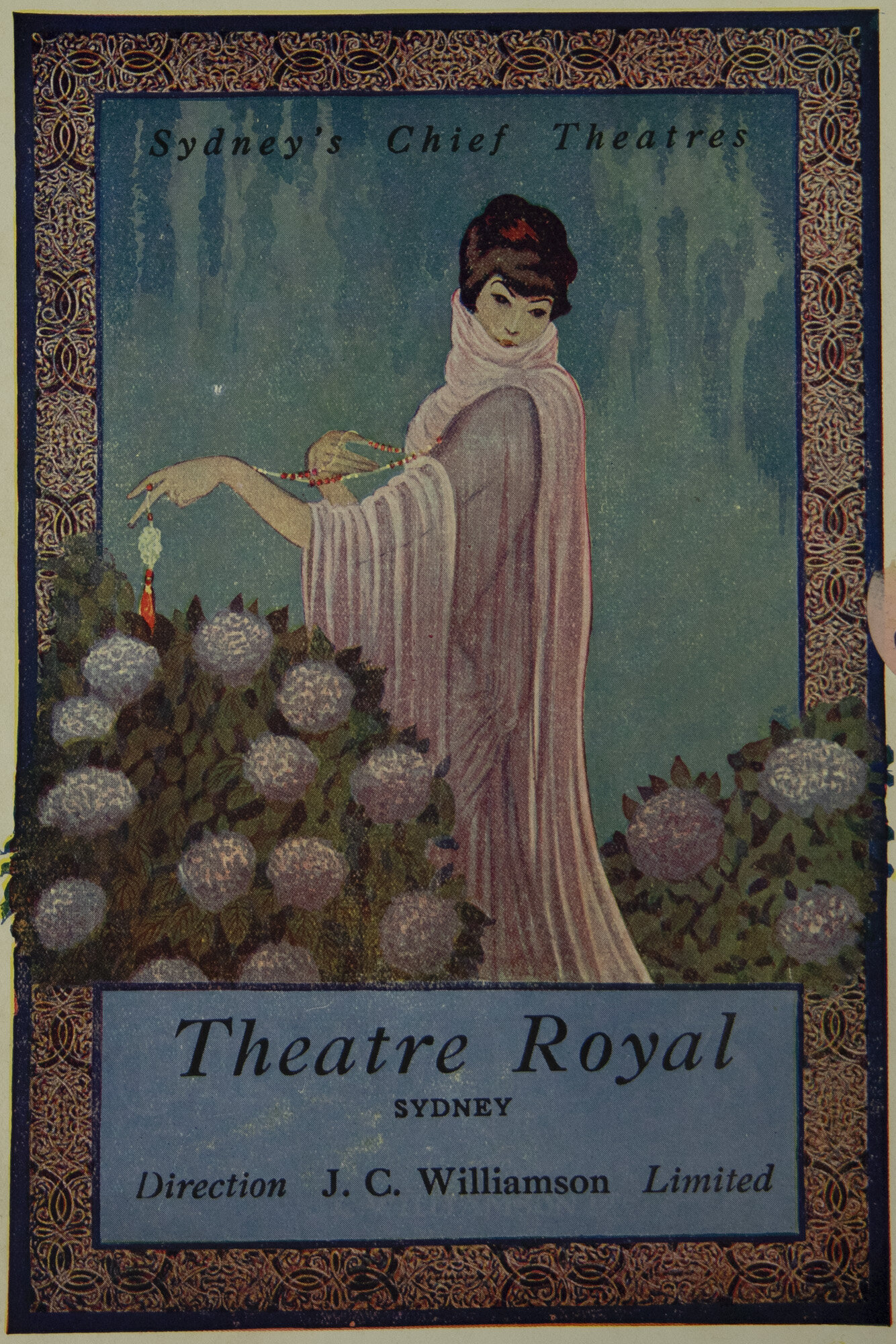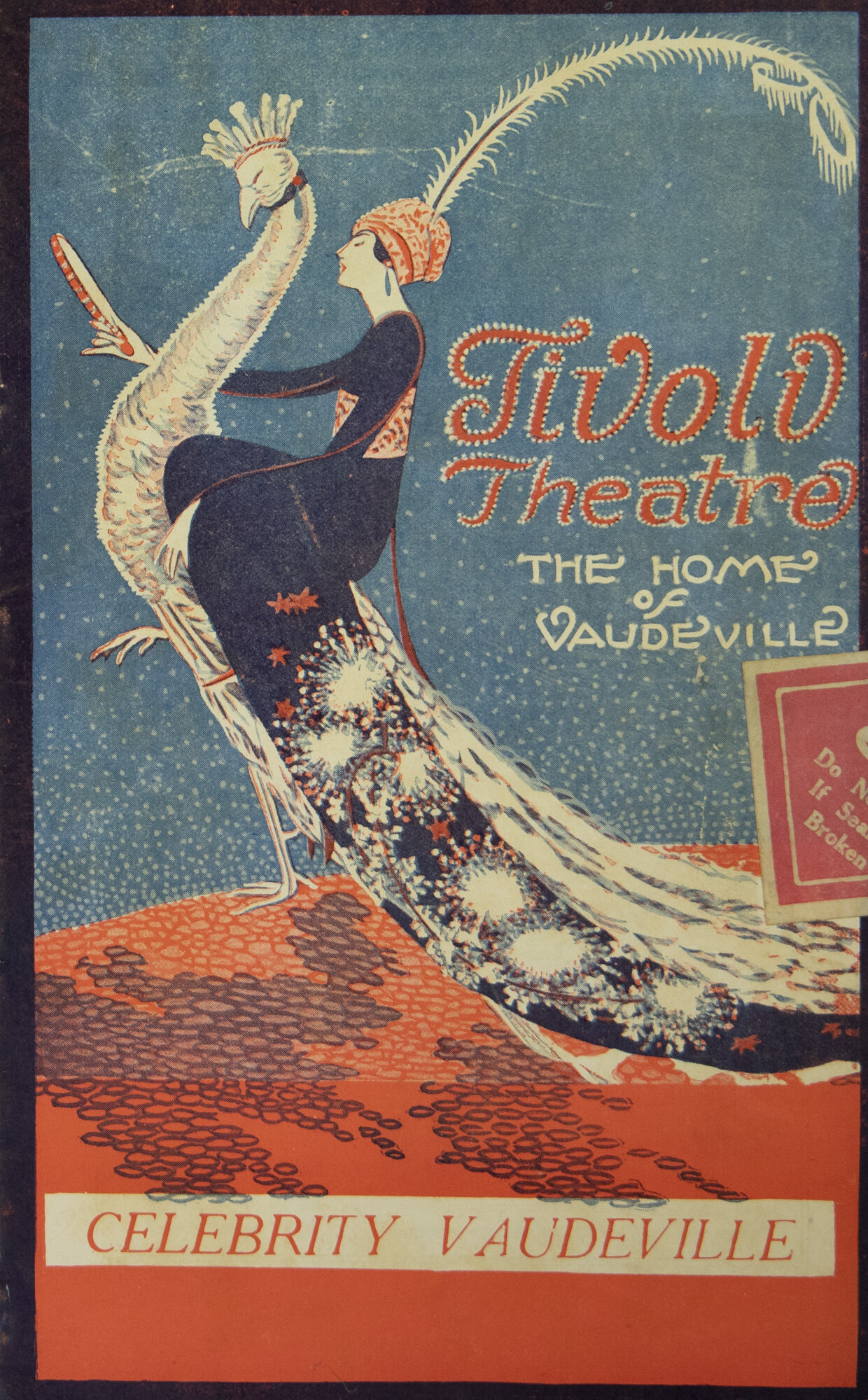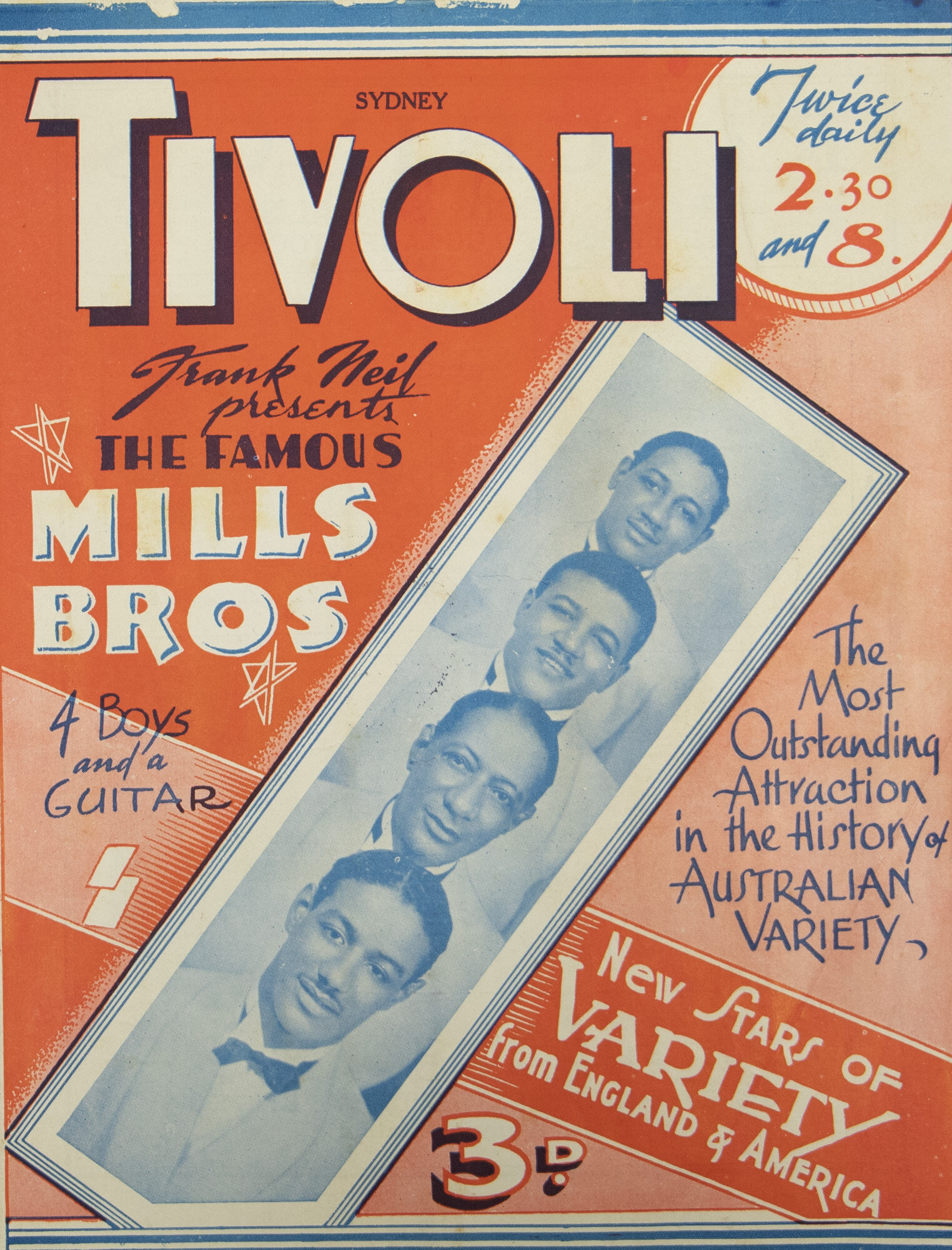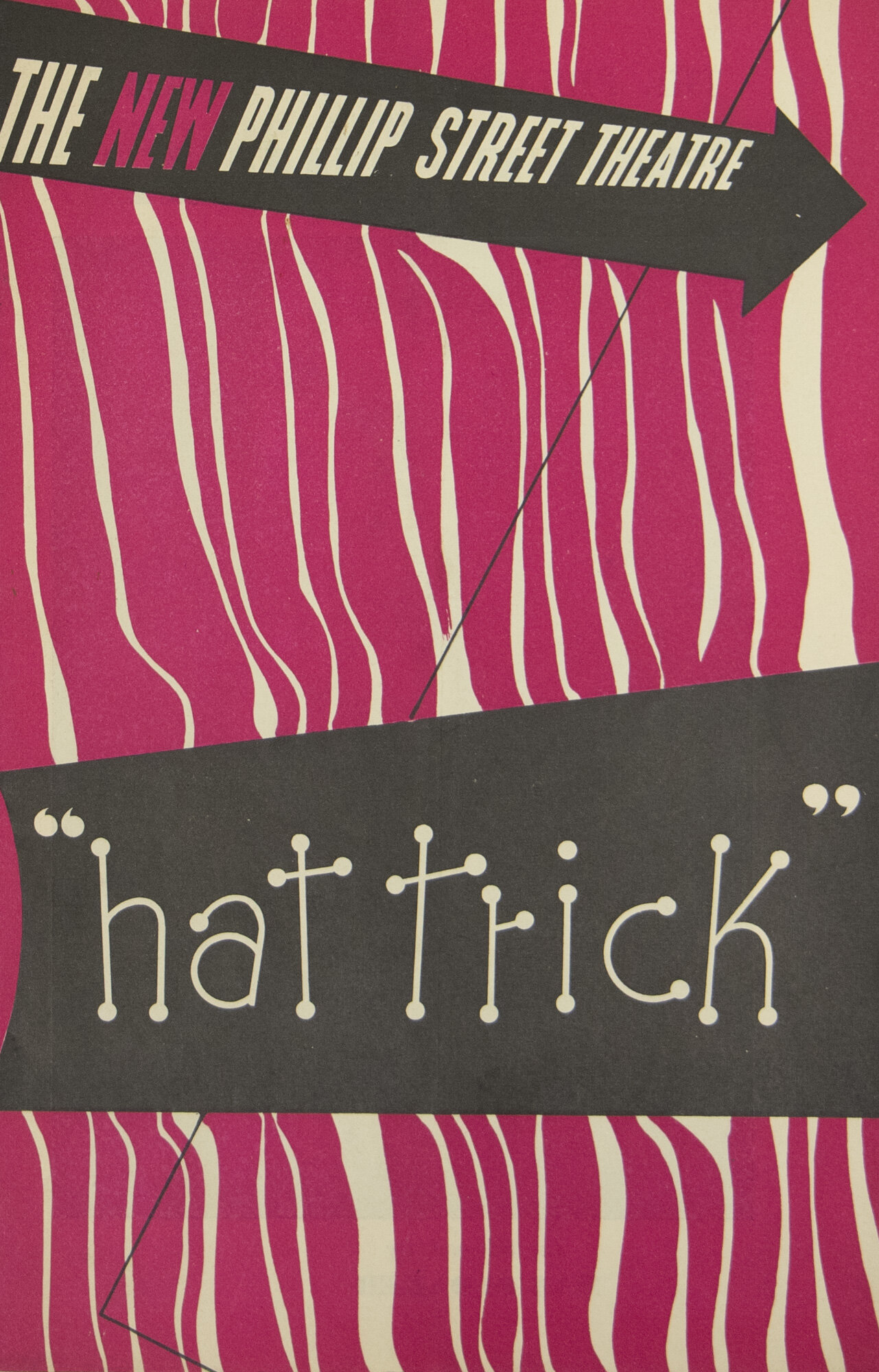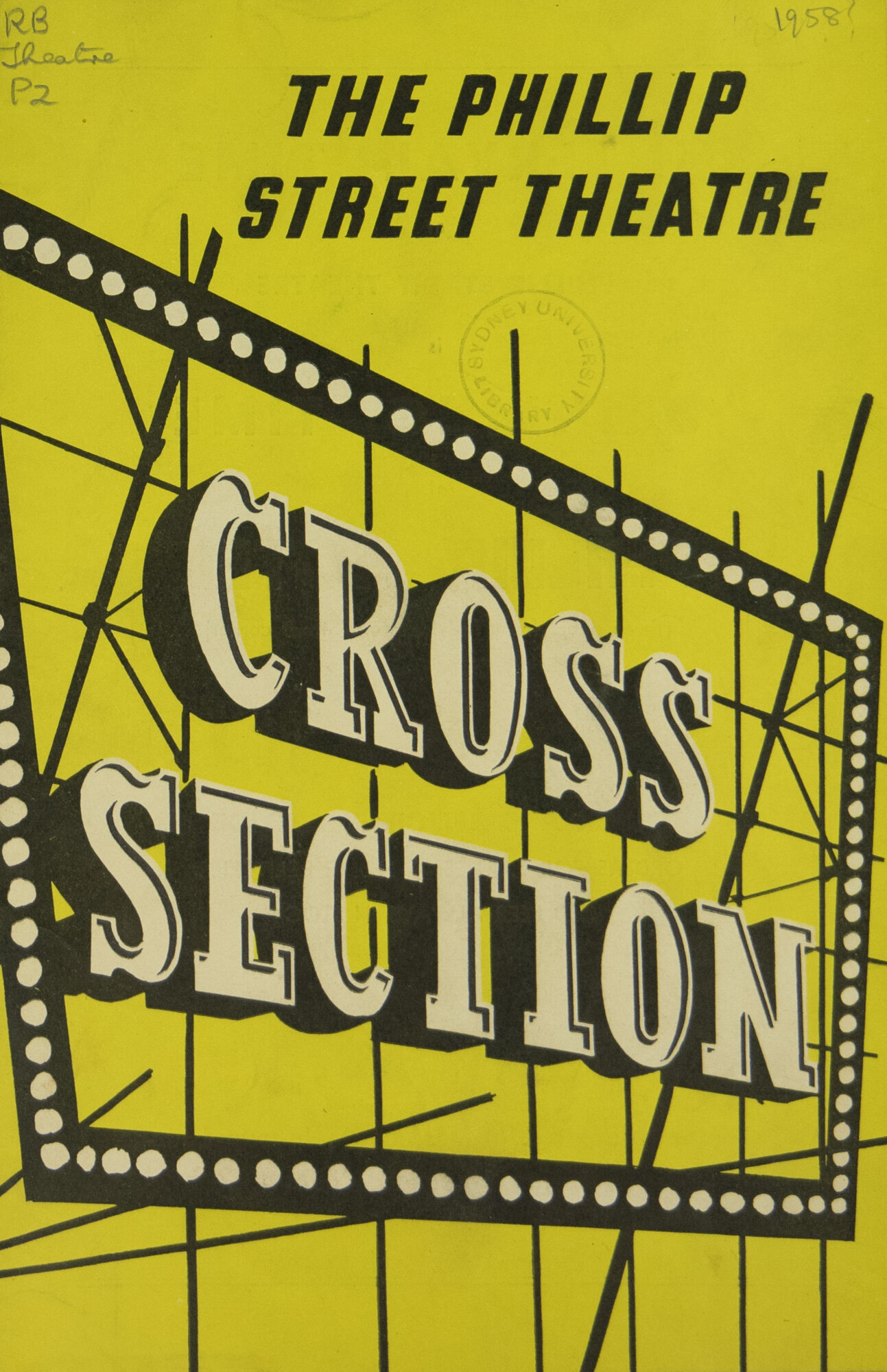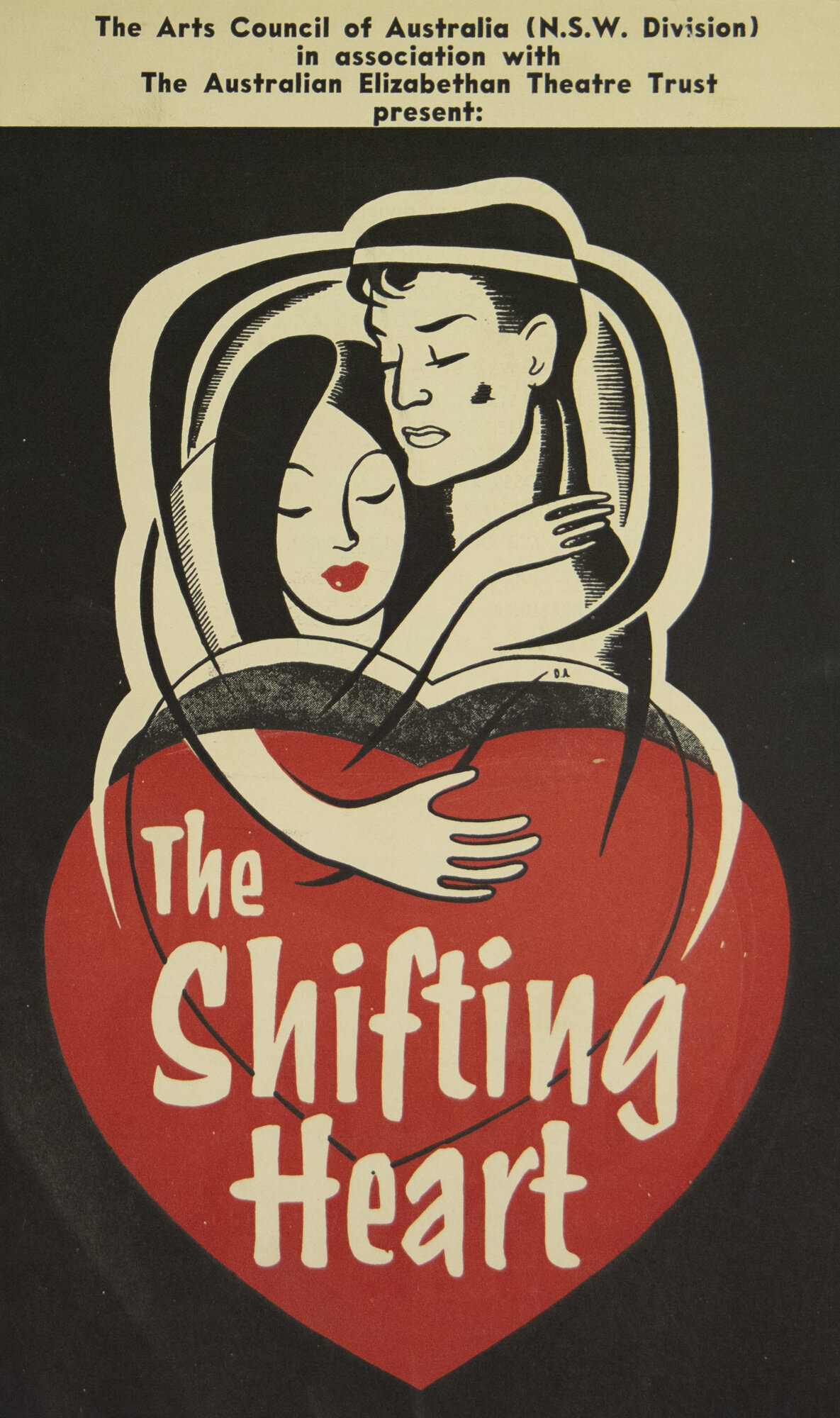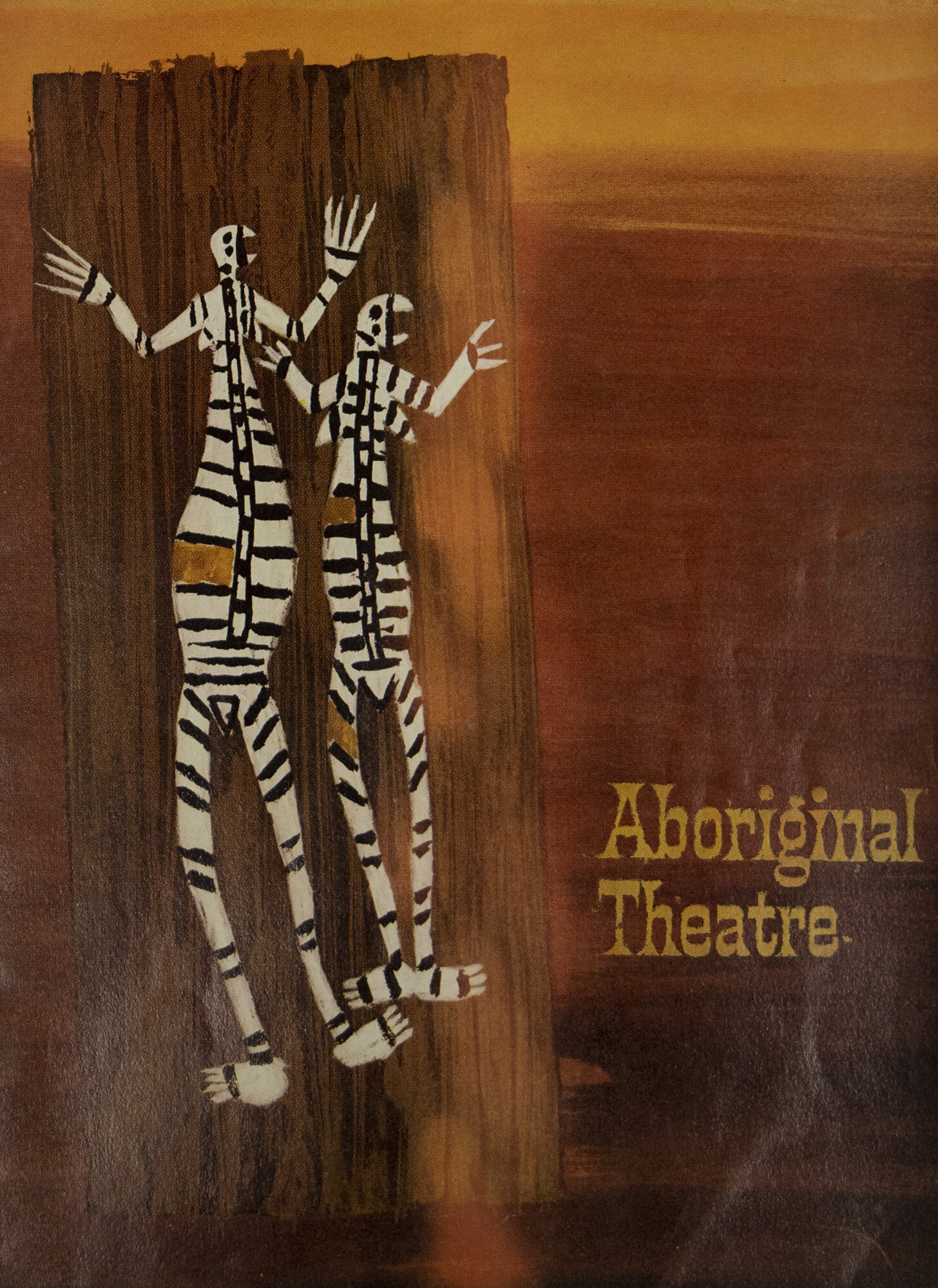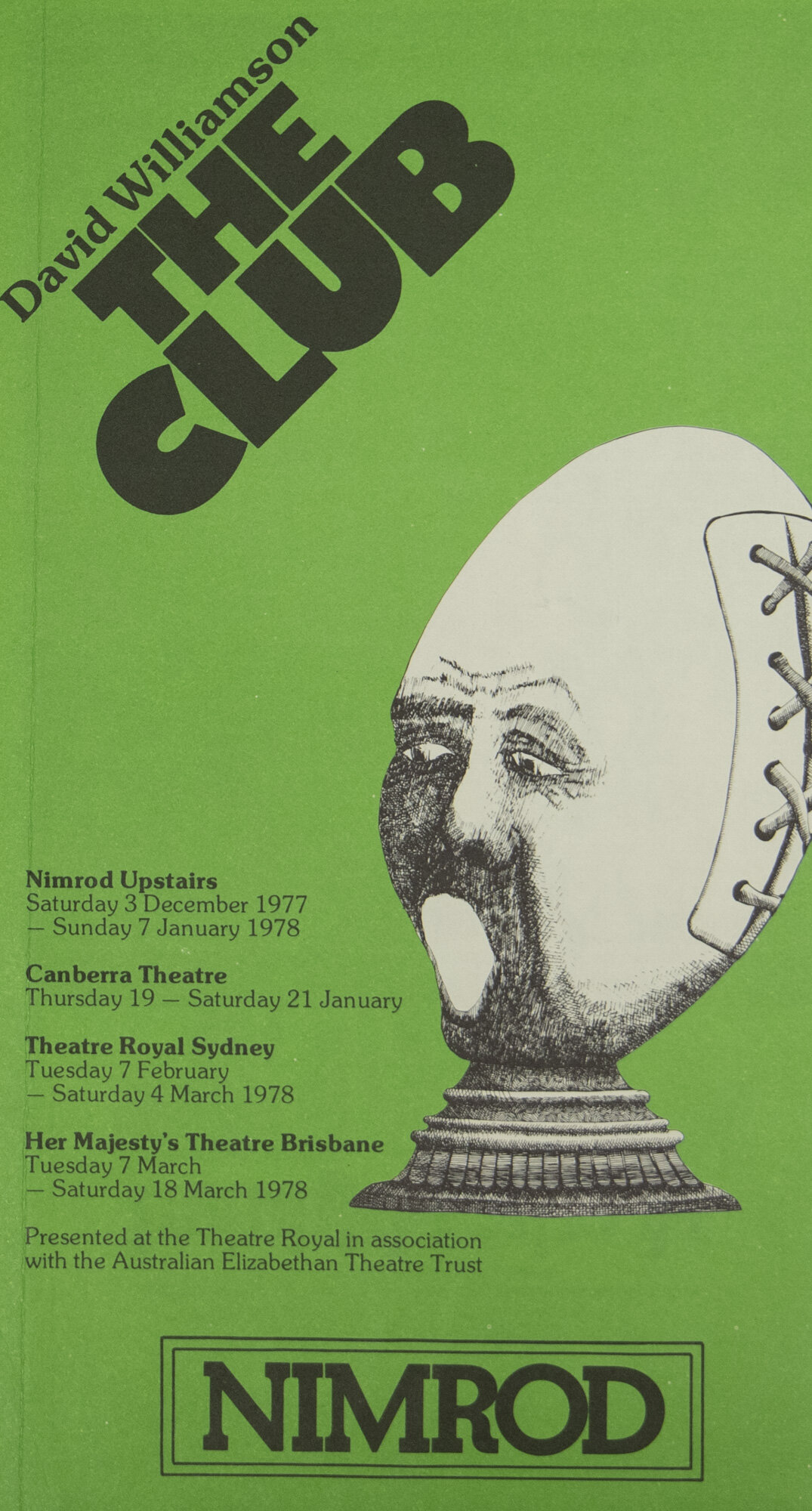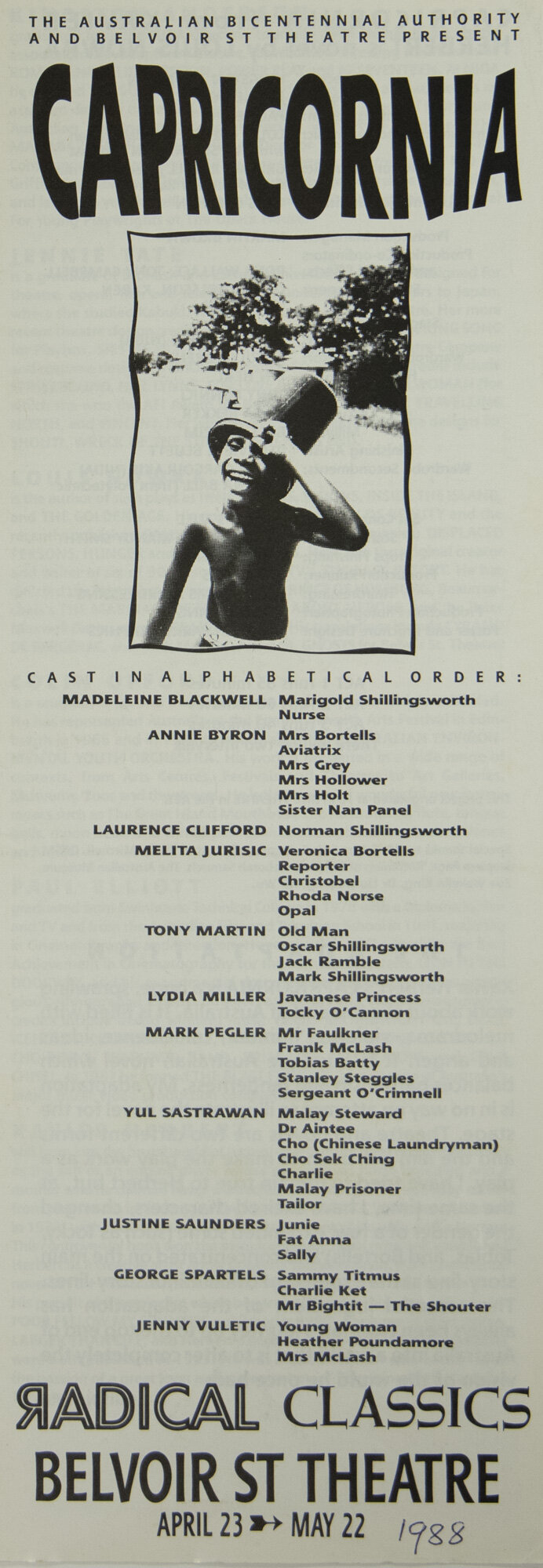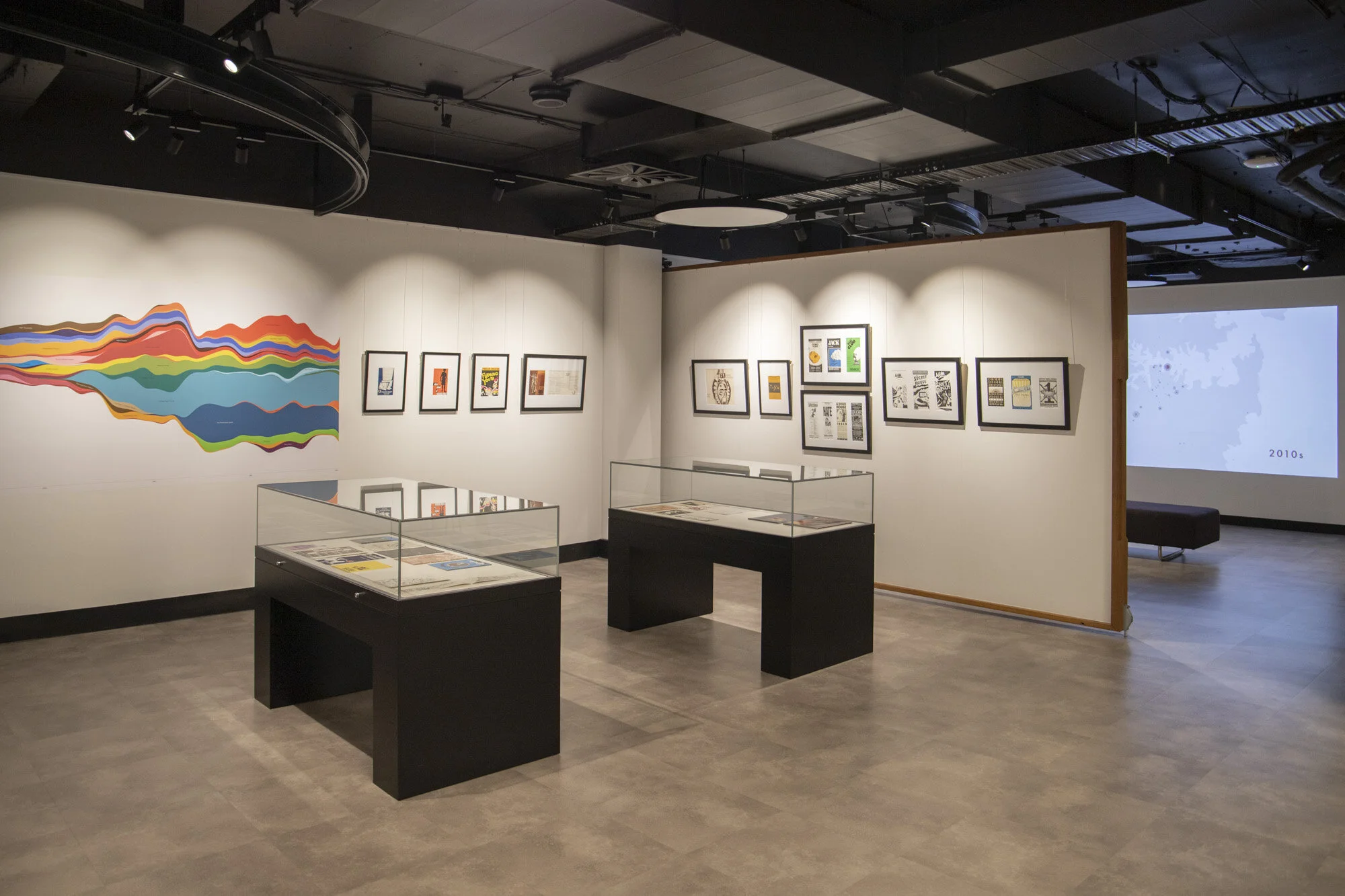Theatre is sometimes imagined as an art form at risk – from talking pictures in the 1920s and television in the 1950s to coronavirus in the 2020s. But, over the last hundred years, theatre in Sydney is a story of growth: more venues, presenting more performances, in a wider range of genres, to growing audiences.
This exhibition draws on the AusStage database of live performance and theatre programs from the Wolanski collection of performing arts. Maps and visualisations show where theatres were located and when they became active. Theatre programs illustrate what was presented to audiences in Sydney and how the repertoire in performance has changed over time.
The changes have been significant. From the 1920s to the 1950s, theatres in Sydney clustered in the city, operating as commercial ventures, or sustained by amateur energies, channeling the currents of international entertainment and modern drama..
Between the 1960s and the 1990s, the model of production shifted. Theatres entered into alliance with government, businesses, and universities, extracting governmental value from theatrical performance, providing working opportunities for professional artists, and cultivating the values of an educated audience.
In the 2000s and 2010s, performance venues became festival curators. Genres of performance aligned with audience segments, as relations between companies, artists and venues became transient. State governments and city councils invested in artist-led creative spaces and redeveloped cultural precincts for cultural promotion.
This exhibition maps the story of theatre in Sydney to reveal the contours of these changes over the last one hundred years.


In 2017 UNSW Sydney became the caretaker for the Dennis Wolanski Library collection. The collection was originally part of the Sydney Opera House performing arts library. The collection is international in scope and focuses on the performing arts in Australia, 1789-1997. It consists of 1,600 archive boxes, containing press clippings, theatre programs, press releases, correspondence, and ephemera, and a card index of 80,000 entries.
Collection access is managed by the Performance Memories Project, a partnership of UNSW Library, UNSW Theatre and Performance Studies, AusStage and the Wolanski Foundation. As part of project, we have now made available as downloads more than 160,000 records from the project site, including a subject list of research files and two converted card indexes, one covering the performing arts in general, one devoted to Australian drama.
AusStage is the Australian database for live performance, developed by a consortium of universities, government, industry and collections, with funding from the Australian Research Council and partners. The data set on Sydney theatres in AusStage includes 20,464 events at 808 venues between 1920 and 2020. The streamgraph visualises a subset of 15,163 events at 80 of Sydney’s most active theatres in the period. The data set on Sydney is extensive but not complete; data entry into AusStage is ongoing.

1920s–1950s
1920s – Theatre, transportation, and commercial entertainment
In the 1920s, Sydney’s most lively theatres were at the hub of the city’s transportation routes. The major theatres were distributed along the tramlines that ran from Circular Quay to Central Station. J.C. Williamson presented musicals, comedies and operetta at the Theatre Royal and Her Majesty’s, and Harry Rickards at the Tivoli specialised in vaudeville and revue. The smaller Criterion, Playhouse, and Palace theatres presented spoken-word drama and comedy.
Productions at newer theatres appealed to the audience of commuters, traveling into the city centre by train on an expanding suburban network. The Grand Opera House, on Castlereagh Street, near Central Station opened in 1911 by the Fullers brothers, Benjamin and John. The Fullers also built the Majestic Theatre near the train station in Newtown, and the St James Theatre near St James station in the city.
1930s – Amateur dramatics after work
The Great Depression in the 1930s and competition from movies changed the production of live theatre in Sydney. Some commercial theatres closed. But audiences in Sydney always had something to watch. J.C. Williamson continued to present musical comedy, operetta, and drama at the Theatre Royal, while the Grand Opera House in Haymarket became the new Tivoli Theatre in 1932, offering variety, pantomime and revue.
Amateur theatre thrived in the 1930s. Theatre enthusiasts made use of smaller, vacant venues, with capacities for seating no more than several hundred spectators. They found these venues on side streets in older areas of downtown Sydney and on the city fringes east in Darlinghurst. The amateur theatres were led by women. Producers Carrie Tennant, Beryl Bryant and Doris Fitton promoted the production of Australian plays and developed an extensive network of theatre artists between them.
1940s – International drama in professional production
Sydney theatre in the 1940s was shaped by the political divisions that emerged after the Second World War. Two venues represent radically opposed models of production. The Minerva Theatre in King’s Cross ventured a capitalist model of production, inherited from London, New York and Hollywood. Across town, the New Theatre embodied a counter model of collective production, committed to socialised ideals, with plays by Bertolt Brecht, Clifford Odets, and Edward Chodorov.
Sydney theatres in the 1940s cultivated a three-strand pattern of repertoire that persists to this day. The pattern combines recent ‘hits’ from London and New York, premieres of new ‘Australian’ plays, and director-led revivals of European ‘classics’. The pattern was formulated by Doris Fitton, who moved the Independent Theatre into a permanent venue in North Sydney in 1939, and by May Hollinworth, who established the Metropolitan Theatre in 1943. They also introduced a subscription approach to audience development still practised by theatre companies today.
1950s – Arts from entertainment: the commercial and the governmental
Artistic theatre split from commercial entertainment with government intervention in the 1950s. The Theatre Royal offered much the same repertoire as it always had: international plays, Broadway musicals and light opera. The Tivoli continued to present variety-revue, alongside ballet, opera, pantomime and comedy. And the Empire, which had converted to movie screenings in 1929, returned to presenting live performance in the 1950s. Producer William Orr leased St James Hall in the city, previously a venue for amateur drama, and it the Phillip Street Theatre for a series of intimate revues, small-scale song-and-dance shows with commentary on topical themes.
The government-led Australian Elizabethan Theatre Trust was established in 1954 as a subscription initiative to establish national drama, opera and ballet companies. The Trust leased the Majestic in Newtown, and renamed it the Elizabethan Theatre. It promoted touring productions of Australian plays – Summer of the Seventeenth Doll (1955), Ned Kelly (1596), The Shifting Heart (1957), Lola Montez (1958), The Slaughter of St Teresa’s Day, and Bastard Country (1959). The Trust also presented British and American drama, along with seasons of opera and operetta, consolidating an artistic repertoire for audiences in Sydney.
A map of theatres in Sydney, 1920s – 1950s, showing the most active venues recorded by AusStage; venues in purple appear in the streamgraph
Streamgraph 1920s – 1960s
The streamgraph is a timeline of activity at Sydney theatres over one hundred years. Each colour is a venue. The more activity at the venue, the thicker the line becomes. The streamgraph focuses on theatres in each decade that offered something new to audiences – new because the venue did not previously exist, or new because programming at the venue changed the repertoire on offer to audiences.
The streamgraph provides a backbone for the exhibition of theatre programs. The theatre programs the genres of performance that appealed to audiences in Sydney. Programs also indicate the national origin of artists, companies and playwrights, providing evidence of efforts to support local artists and present Australian works.
A streamgraph of events at Sydney theatres, 1920s – 1950s, showing the most active venues recorded by AusStage.
Theatre Royal
The Green Hat by Michael Arlen, with Judith Anderson, presented by J. C. Williamson Ltd, 1927
Theatre Royal
Lilac Time, a play with music by Franz Schubert, The Royal Comic Opera Company, with Harriet Bennet, presented by J. C. Williamson Ltd, 1926
Her Majesty’s Theatre
Rose Marie by Arthur Hammerstein, presented by J. C. Williamson Ltd, 1926
Her Majesty's Theatre
Katja, a musical play in three acts, presented by J. C. Williamson Ltd, 1926
Grand Opera House
Chu Chin Chow by Oscar Asche, presented by J. C. Williamson Ltd, 1921
Tivoli Theatre
Celebrity Vaudeville, presented by Harry Rickard’s Tivoli Theatres Ltd, 1924
St James Theatre
Jack and the Beanstalk, pantomime, presented by Sir Benjamin Fuller and John Fuller, 1926–27
Tivoli Theatre
Will Mahoney in Why Be Serious, presented by Frank Neil, 1938
Tivoli Theatre
International Variety Stars, revue, and Mother Goose, pantomime, presented by Frank Neil, 1936–37
Tivoli Theatre
The Mills Brothers in Four Boys and a Guitar, with George Wallace and Lea Sonia, presented by Frank Neil, 1939
Tivoli Theatre
Anna May Wong in Highlights from Hollywood, presented by Frank Neil, 1939
Workers’ Art Club
Squaring the Circle by Valentine Katayev, produced by Edmund Allison, New Theatre League, 1937
Workers’ Art Club
Plant in the Sun by Ben Bengal, with Transit by Albert Maltz, produced by Victor Arnold, New Theatre League, 1939
New Theatre, Sydney
Lawson by Oriel Gray – ‘Based on the Life and Works of the great Australian Writer’ – produced by John Gray, New Theatre League, 1943
New Theatre, Sydney
Counter Attack by Janet and Philip Stevenson, based on a Russian play by Ilya Vershinin and Mikhail Ruderman, produced by Enid Lorimer, New Theatre League, 1943
Theatre Royal
A Streetcar Named Desire by Tennessee Williams, presented by J. C. Williamson Theatres Ltd, 1950
Empire Theatre
South Pacific by Richard Rodgers and Oscar Hammerstein II, presented by J.C. Williamson Theatres Ltd, 1954
Theatre Royal
The Classical Theatre of China, Peking opera, presented by J. C. Williamson Theatres Ltd and Garnet H. Carroll, 1956
Tivoli Theatre
Katherine Dunham and Her Company of Dancers, Singers, Musicians, presented by David N. Martin, 1956
Tivoli Theatre
Peter Brough and Archie Andrews in Calypso Capers, presented by David N. Martin, 1957
Phillip Street Theatre
Hat Trick – Happy Returns – Cross Section – intimate revues, presented by William Orr, 1955–57
Elizabethan Theatre
The Shifting Heart by Richard Beynon, toured by The Arts Council of Australia (NSW Division) in association with The Australian Elizabethan Theatre Trust, 1957–1958
1960s – 1990s
1960s – Distributed reach: little theatres, serious pursuits
During the 1960s theatres in Sydney adopted a subsidy-sponsorship model for production in partnerships with business, government and universities. The Old Tote was created in a tin shed at the University of New South Wales. The Q Theatre presented lunchtime theatre at the AMP Theatrette in Circular Quay. And PACT launched as an artists’ cooperative in a building provided by the Sydney City Council in 1964. They operated on a ‘professional’ basis, neither amateur, nor strictly commercial.
Alongside the Ensemble housed in a harbour-side boat shed in Kirribilli, the church-based Genesian Theatre in the city, and the community-based Pocket Playhouse to the south in Sydenham, the theatres operating on subsidy-sponsorship in the 1960s secured access to venues for rehearsal and production. In stabilising operations through institutional alignments, these theatres also engaged governmental ideas about artistic appeal for an educated audience and provided employment for a growing workforce of artists.
1970s – Into the house: Sydney Opera House and alternative theatres
Theatre expanded across Sydney in the 1970s. The number theatres in Sydney doubled in the decade: from 75 venues in the 1960s to 146 in the 1970s. The momentous opening of the Sydney Opera House added a whole complex of venues: Concert Hall, Opera Theatre, and Drama Theatre, along with a Music Room and a Recording Hall. The Old Tote became a resident company. At the same time, smaller alternative theatres proliferated across the inner suburbs.
Small-scale and marginal, the alternative theatres embodied a commitment to staging Australian plays and an oppositional stance. In 1970 Nimrod converted an old stables near King’s Cross into a theatre (now home to Griffin). From 1974 to 1977 the Black Theatre Arts and Culture Centre in Redfern presented theatre by Aboriginal artists and the National Black Theatre Company. Audiences across the inner suburbs attended UNSW’s Jane Street Theatre in Randwick, the Mews Playhouse in Centennial Park, the Australian Theatre in Newtown, and the Actors’ Company Theatre in Ultimo.
1980s – Company positions, genre distinctions, audience relations
Sydney’s ‘mainstage’ theatre companies moved into their own venues in the 1980s and are still in residence today. Sydney Theatre Company, formed after the demise the Old Tote, presented its first production in 1979, and moved into the Wharf at Walsh Bay in 1984. Griffin moved into the Stables in 1980, after it had been used as a city-side venue by the Ensemble Theatre. The company that became Belvoir St Theatre moved into Nimrod’s former theatre in Surry Hills in 1985, while the Seymour Centre at the University of Sydney, provided three theatres for touring companies and festival shows, and base for Nimrod until 1987.
Performance diversified in the 1980s when The Performance Space, in Redfern (from 1980), and the Off Broadway Theatre (later Bay Street Theatre), in Glebe (from 1984), provided opportunities for artists to experiment with form. Previously, a small range of genres defined theatre: drama, comedy, mystery, tragedy, ballet, pantomime, variety, revue. In the 1980s the range of genres expanded to include performance art, dance theatre, contemporary performance, corporeal theatre, avant-garde, experimental, visual theatre, physical theatre, post-dramatic, group-devised, monodrama, movement-based, improvised, multimedia, video art, exhibition, installation and more.
1990s – Re-enchantment of entertainment: renovated theatres, pub shows and artists studios
The subsidy-sponsorship model and subscriber-audiences that established the ‘mainstage’ companies disrupted the commercial production of theatre. While musicals were presented at the new Theatre Royal and Her Majesty’s during the 1970s and 1980s, three renovated cinemas expanded Sydney’s capacity for commercial theatre in the 1990s: the State Theatre in Market Street, the Capitol Theatre in Haymarket, and the Enmore Theatre near Newtown. Sydney Harbour Casino (later known as Star City Casino and the Star Sydney) added the Sydney Lyric Theatre as a fourth large-scale venue for commercial production in 1997. Elsewhere, smaller, artist-generated spaces in pubs, unused halls and studios, for production on a co-operative basis in the margins of the subsidised sector: the Crossroads Theatre in Darlinghurst (reviving the venue that had been used as Bryant’s Playhouse in the 1930s), the Tilbury Hotel in Woolloomooloo, the Lookout Theatre in Woollahra, and the The Edge Theatre in Newtown.
A map of theatres in Sydney, 1960s – 1990s, showing the most active venues recorded by AusStage; venues in purple appear in the streamgraph
A streamgraph of events at Sydney theatres, 1960s - 1990s, showing the most active venues recorded by AusStage
AMP Theatrette
The Typists by Murray Shisgall, produced by Maurice Hilliard, Q Theatre Company, 1967
Old Tote Theatre, UNSW
Who's Afraid of Virginia Woolf? by Edward Albee, produced by Old Tote Theatre, toured by the Australian Elizabethan Theatre Trust in association with the Arts Council of Australia (NSW), 1964–65
Phillip Theatre
Flaming Youth, revue produced by William Orr, 1963
Elizabethan Theatre
The Aboriginal Theatre with performers from Bathurst Island, Yirrkala and the Daly River area, presented by the Australian Elizabethan Theatre Trust, 1963
Union Refectory, University of Sydney
Peter Gynt, an adaptation of Peer Gynt by Henrik Ibsen, written by Terry McGee, presented by PACT, 1970
Cell Block Theatre, East Sydney Technical College
Revue Balloon Dubloon, with Grahame Bond and Peter Weir, presented by PACT, 1969
Sir John Clancy Auditorium, UNSW
King Oedipus, directed by Tyrone Guthrie, presented by The Old Tote Theatre Company, 1970
Sydney Opera House Drama Theatre
Cradle of Hercules by Michael Boddy, with Jack Charles, Zac Martin, Sylvania Doolan, David Gulpilil and Alanna Coorey, presented by The Old Tote Theatre Company, 1974
Black Theatre Arts and Culture Centre
The Cakeman by Robert J. Merritt, directed by Bob Maza, consultants Bryan Syron and Carole Johnson, 1975
Nimrod, Surry Hills
Going Home by Alma de Groen, presented by Nimrod Street Theatre Company, 1977
Nimrod, Surry Hills
Jack by Jim McNeil, presented by Nimrod Street Theatre Company, 1977
Nimrod, Surry Hills
The Club by David Williamson, presented by Nimrod Street Theatre Company, 1977–78
Belvoir Street Theatre
Capricornia by Xavier Herbert, adapted by Louis Nowra, presented by the Australian Bicentennial Authority and Belvoir Street Theatre, 1988
Belvoir Street Theatre
Hate by Stephen Sewell, presented by the Playbox Theatre Company and Belvoir Street Theatre in association with the Australian Bicentennial Authority, 1988
Belvoir Street Theatre
A Doll’s House by Henrik Ibsen, presented by Belvoir Street Theatre, 1989
Belvoir Street Theatre
s Greek Tragedyy, presented by Belvoir Street Theatre in association with the Australian Bicentennial Authority and the British Council, 1989
2000s – 2010s & Beyond
2000s – Stratification: genre diversity, audience segments, festival curation
The map of Sydney theatres in the 2000s thickens as new venues add layers to the existing strata. The new layers laminate performance genres into alignment with audience segments, while relations between companies, artists and venues become flexible and festivalised. The Sydney Theatre (now Roslyn Packer Theatre) was designed as venue-home for productions from the Sydney Theatre Company and the Sydney Dance Company, and as a touring venue for international companies. Pinchgut Opera at the City Recital Hall presented chamber-scale operas from the 17th and 18th repertoire, which Opera Australia at the Sydney Opera House rarely produces.
Other venues became curators of performance in many genres. The Studio at the Sydney Opera House presented music, dance, drama, comedy, drag, circus and burlesque in shows of short duration that fit into the social schedule of an evening out. Carriageworks embodied genre-diversity in its design as a multi-arts urban precinct for performance, dance, installations and events that encompass the innovative, the hybrid and the experimental. Meanwhile, artist-collectives continued to produce theatre in found spaces, including the Darlinghurst Theatre Company in Potts Point, the Tamarama Rock Surfers at the Old Fitzroy Hotel in Woolloomooloo, and Short and Sweet seasons at the Newtown Theatre.
2010s – New venues for old forms: renovations, replacements and redevelopments
In the 2010s, Sydney city-council investment in artist-led creative spaces proceeded alongside major state-level public-private investments in redeveloping, upgrading and replacing venues. The Eternity Playhouse in Darlinghurst and the Hayes Theatre in Potts Point represent city council investments in production capacity, drawing on the independent theatre scene that develops around actor training and plays across makeshift venues, like the Old 505 Theatre.
State-government re-investment proceeded on a massive scale with multi-million dollar upgrades to the Sydney Opera House, the Wharf at Walsh Bay, and the Theatre Royal, while newly-built venues take the place of old venues as more-or-less like-for-like replacements. The Darling Quarter Theatre in a Darling Harbour redevelopment became home for Monkey Baa Productions, providing children’s entertainment in place of Sega World. The ICC Sydney Theatre (later, the First State Super Theatre, and the Aware Super Theatre) replaced the Sydney Entertainment Centre and, likewise, the Esme Timbery Creative Practice Lab incorporated replacements for Io Myers and Studio One.
Theatres across suburban Sydney – Performing beyond the city
The Sydney map of theatres is a cluster-centric form, focused on the city centre and the inner suburbs. But the story of performance across Sydney is more expansive than the metro-centric cluster of venues.
Theatres in the northern suburbs – Marian Street Theatre in Killara, Glen Street Theatre in Frenchs Forest, and the Zenith Theatre in Chatswood – sustained audiences through the 1960s–80s. Since the 1970s, the larger city councils in greater Sydney have built venues for performing arts, or converted civic centres into entertainment centres in Sutherland, Castle Hill, Hurstville, Penrith, Casula, Blacktown, Chatswood and Bankstown. Director Doreen Warburton moved the Q Theatre from Circular Quay to Penrith in 1977, and opened the Riverside Theatres in Parramatta with a production of The Sentimental Bloke in 1988. Sidetrack Performance Group performed across greater Sydney in the 1980s–90s, and Death Defying Theatre moved to Bankstown to become Urban Theatre Projects in 1997.
Licensed clubs across suburbs and regional towns provided touring venues for variety entertainment since the 1960s. The latest venue is the Sydney Coliseum Theatre at WestHQ in Rooty Hill, a 2,000-seat lyric theatre, rivalling the largest in the city centre. Although the first year was disrupted by the Covid-19 pandemic, programming adopts an ‘arts-as-entertainment’ repertoire popular since the 1950s, ranging from the Australian Ballet to Bangarra, Wolfgang’s Magical Musical Circus by Circa to Birds of Tokyo with the Sydney Symphony Orchestra, and, for the children, Snow White and the Seven Dwarfs by Bonnie Lythgoe’s OzPanto productions.
SOURCES
AusStage, http://ausstage.edu.au
Katharine Brisbane, ed. Entertaining Australia: An Illustrated History (Sydney: Currency Press, 1991)
Dictionary of Sydney, https://home.dictionaryofsydney.org
Philip Parsons with Victoria Chance, ed., Companion to Theatre in Australia (Sydney : Currency Press in association with Cambridge University Press, 1995)
Ross Thorne, http://rossthorne.com
Trove, http://trove.nla.gov.au
A map of theatres in Sydney, 2000s – 2010s, showing the most active venues recorded by AusStage; venues in purple appear in the streamgraph
A streamgraph of events at Sydney theatres, 1960s - 1990s, showing the most active venues recorded by AusStage
Visualising productions at Sydney theatres, 2000s – 2010s
The relations of companies and artists to Sydney’s newest venues is flexible and transient. Producers curate programs that present a festival-like variety to different audiences. Visualisations of data from AusStage show how local artists from Australia and touring companies from overseas appear in a wide range of performance genres.
The Studio expanded the genres presented at the Sydney Opera House in the 2000s by programming contemporary music, dance, drama, comedy, drag, circus and burlesque. Show were around one-hour in duration to fit with socialising in the city on an evening out.
The Sydney Theatre was designed as a venue for the Sydney Theatre Company and the Sydney Dance Company. It also provides a touring venue for international companies, including Chicago’s Steppenwolf Theatre Company, Berlin’s Schaubühne, Robert LePage’s Ex Machina, the Maly Theatre of St Petersburg, and the National Theatre from London. It is now known as Roslyn Packer Theatre.
Carriageworks embodied variety in its venue design, providing blank bays as a multi-arts urban precinct for performance, dance and arts events that range across the innovative, the hybrid and the experimental from companies like Version 1.0, De Quincey Co, Branch Nebula, My Darling Patricia, Brown Council, Marrugeku, and Legs on the Wall.
Programming at The Studio, Sydney Opera House, 2000–2018 (Visualisation of data from AusStage by Jonathan Bollen, 2020)
Programming at Carriageworks, 2007–2018 (Visualisation of data from AusStage by Jonathan Bollen, 2020)
Programming at Sydney Theatre, 2004–2015, and Roslyn Packer Theatre, 2016-2020 (Visualisation of data from AusStage by Jonathan Bollen, 2020)
City council investment in artist-oriented creative spaces in the 2000s and 2010s proceeded alongside major state-level investments in redeveloping, upgrading and replacing Sydney’s theatres. Four smaller-scale venues defined genre distinctions for audience segments. These distinctions are evident in visualisations of data from AusStage.
The Darlinghurst Theatre Company moved production of local drama into the renovated Eternity Playhouse in 2013. The Hayes Theatre specialised in cabaret and musicals on a small scale moved into Potts Point in 2014. Pinchgut Opera at the City Recital Hall since 2003 created an audience for baroque opera in Sydney. In 2012 the Darling Quarter Theatre became the home theatre for Monkey Baa’s Productions for children.
Genres at City Recital Hall, 2001–2020 (Visualisation of data from AusStage by Jonathan Bollen, 2020)
Genres at Darling Quarter Theatre, 2012–2018 (Visualisation of data from AusStage by Jonathan Bollen, 2020)
Genres at Eternity Playhouse, 2014–2019 (Visualisation of data from AusStage by Jonathan Bollen, 2020)
Genres at Hayes Theatre Co., 2014–2020 (Visualisation of data from AusStage by Jonathan Bollen, 2020)


